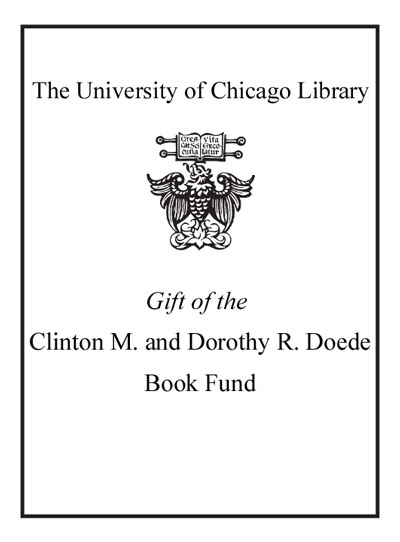Symbiosis : mechanisms and model systems /
Saved in:
| Imprint: | Dordrecht ; Boston : Kluwer Academic Publishers, c2002. |
|---|---|
| Description: | xxx, 796 p. : ill. ; 25 cm. |
| Language: | English |
| Series: | Cellular origin and life in extreme habitats ; v. 4 |
| Subject: | |
| Format: | Print Book |
| URL for this record: | http://pi.lib.uchicago.edu/1001/cat/bib/4719794 |
Table of Contents:
- Foreword
- Preface
- Acknowledgments
- List of authors and their addresses
- Legends for the cover photos
- I.. General Aspects
- Prioritizing Symbiosis to Sustain Biodiversity: Are Symbionts Keystone Species?
- Morphological Aspects of Symbiosis
- Symbioses and Their Consequences for Community and Applied Ecology
- II.. Origin & Evolution
- What's in a Tree? Does Horizontal Gene Transfer Determine Microbial Taxonomy?
- The Commonality of Cyanobacterial Endosymbioses Does Not Support the Endosymbiotic Theory for Origin of Eukaryotic Organelles
- Non Symbiotic Origin of Locomotory Organelles
- The Cyanelle (Muroplast) of Cyanophora Paradoxa: A Paradigm for Endosymbiotic Organelle Evolution
- The Syntrophy Hypothesis for the Origin of Eukaryotes
- Thermodynamic Ecology of Hydrogen-Based Syntrophy
- Nutritional Syntrophies and Consortia as Models for the Origin of Mitochondria
- Reversion of Endosymbiosis? The Case of Bleaching in Euglena
- Symbiosomes
- The Absence of Nitrogen-Fixing Organelles Due to Timing of the Nitrogen Crisis
- Nucleus Symbiosis Hypothesis: Formation of Eukaryotic Cell Nuclei by the Symbiosis of Archaea in Bacteria
- III.. Bacteria, Cyanobacteria & Algae
- Phototrophic Consortia: A Tight Cooperation Between Non-Related Eubacteria
- Structure and Phylogeny of Cyanophora Species
- The Microenvironment and Photosynthetic Performance of Prochloron sp. in Symbiosis with Didemnid Ascidians
- IV.. Fungi Symbiosis
- Survival Strategies in Arbuscular Mycorrhizal Symbionts
- Three Part Harmony--Ascophyllum and its Symbionts
- Arbuscular Mycorrhizal Fungi and Their Endobacteria
- V.. Lichens
- Origin and Evolution of Green Lichen Algae
- Lichenization of the Trentepohliales
- Trebouxia: Reflections on a Perplexing and Controversial Lichen Photobiont
- VI.. Symbiosis in Plants
- Algae Living on Trees and in Other Strange Places
- Cycad Coralloid Roots Housing Cyanobacteria
- Evolution of Epichloe/Neotyphodium Endophytes and Other Clavicipitalean Biotrophs
- The Effect of Endophytic Fungi on Host Plant Morphogenesis
- VII.. Association with Protozoa
- Anaerobic Ciliates and Their Methanogenic Endosymbionts
- Endosymbiosis of Beta-Proteobacteria in Trypanosomatid Protozoa
- Ectosymbiosis in Ciliated Protozoa
- Living Sands: Symbiosis Between Foraminifera and Algae
- Protistan-Prokaryotic Symbioses in Deep-Sea Sulfidic Sediments
- VIII.. Symbiosis in Insects and Higher Animals
- Sponge/Algal Symbioses: A Diversity of Associations
- The Taxonomy and Evolution of the Zooxanthellae-Coral Symbiosis
- Algal Symbiosis in Flatworms
- Trichomycetes: Fungi in Relationship with Insects and Other Arthropods
- Evolution of Ascomycota-Arthropoda Symbioses
- The Laboulbeniales--An Enigmatic Group of Arthropod-Associated Fungi
- Wolbachia-Induced Cytoplasmic Incompatibility
- How Do Wolbachia Symbionts Increase the Proportion of Females in Their Hosts?
- Genome of Buchnera sp. Aps, An Intracellular Symbiotic Bacterium of the Pea Aphid, Acyrthosiphon pisum
- The Functions of Symbiotic Micro-Organisms in Insects. A Perspective from Studies on Aposymbiotic Aphids
- Ants, Agriculture and Antibiotics. A Quadripartite Symbiosis
- Termite Hindgut Symbionts
- Symbiosis in the Termite Gut
- Cultivation of Symbiotic Fungi by Termites of the Subfamily Macrotermitinae
- Cospeciation Between Hosts and Symbionts: The Sepiolid Squid-Vibrio Mutualism
- Index


